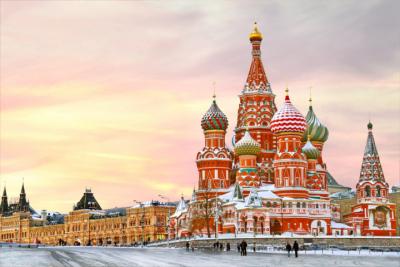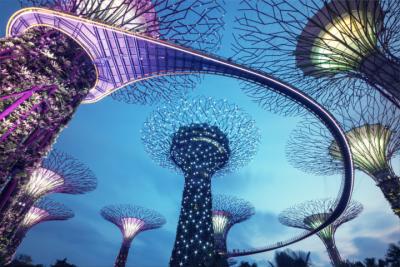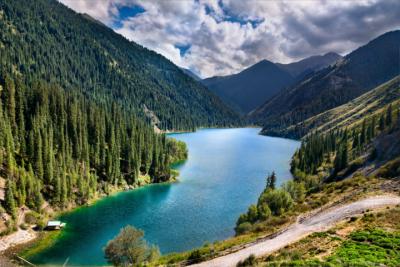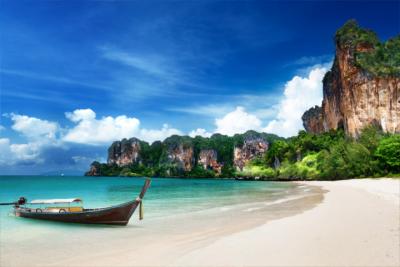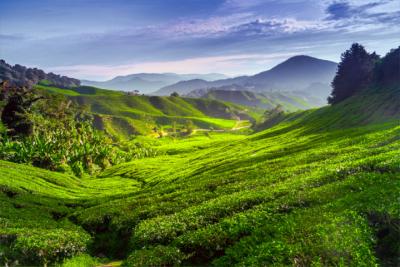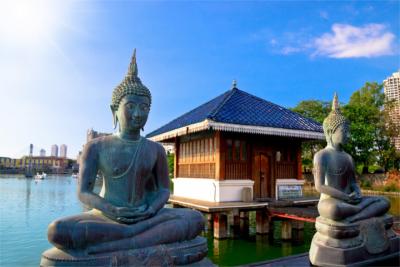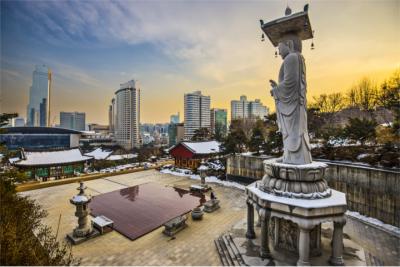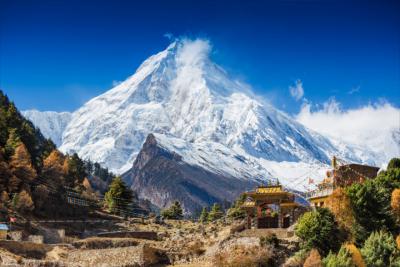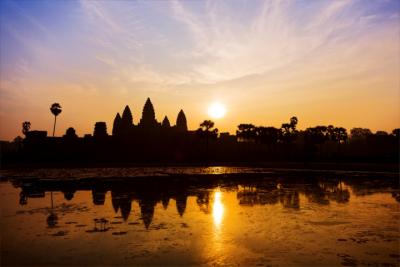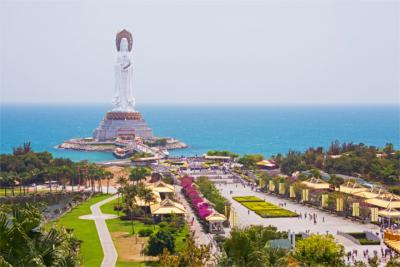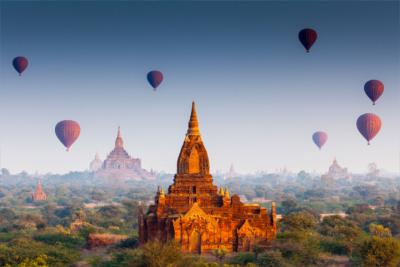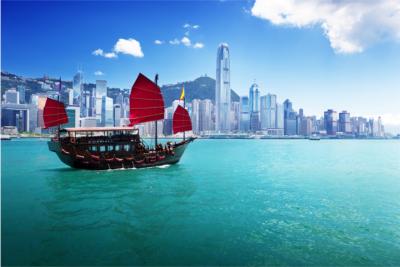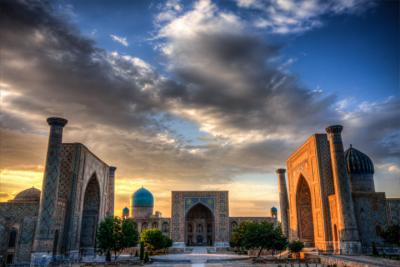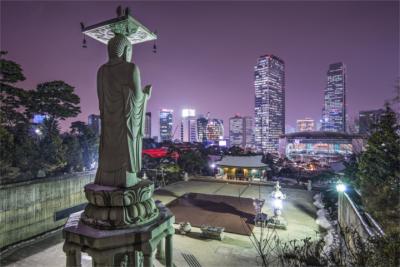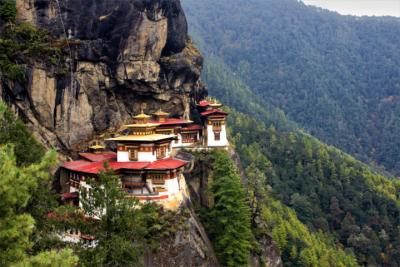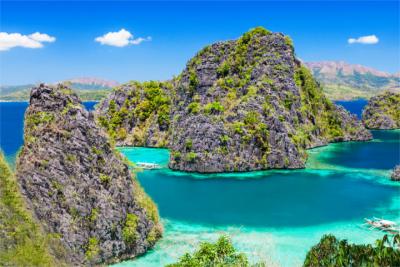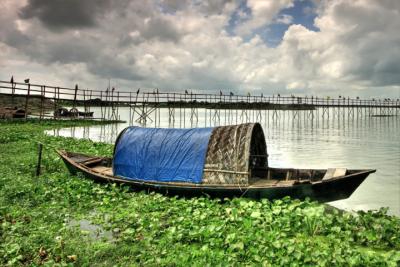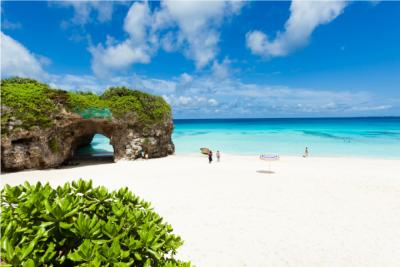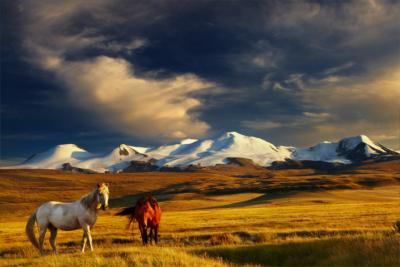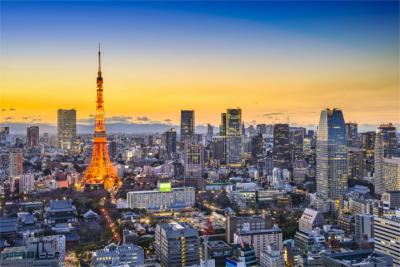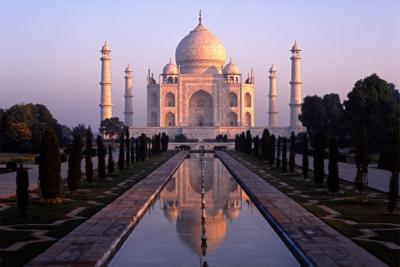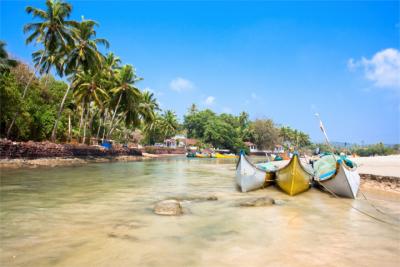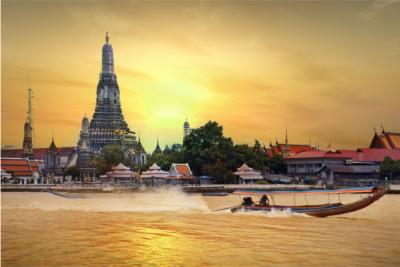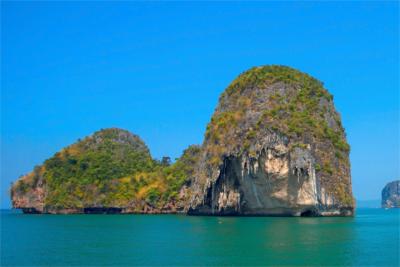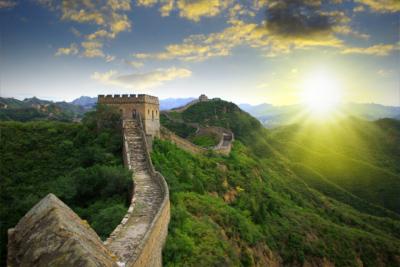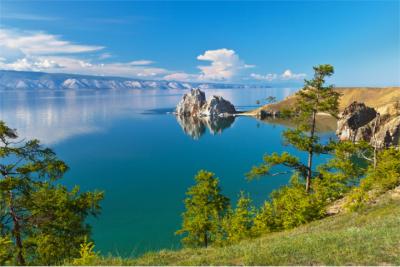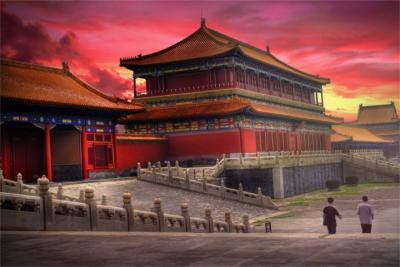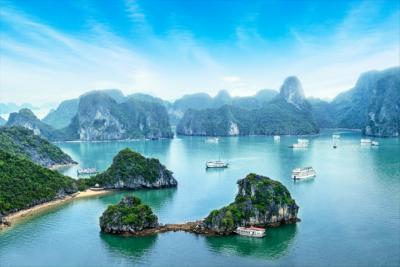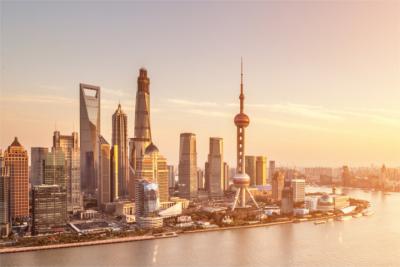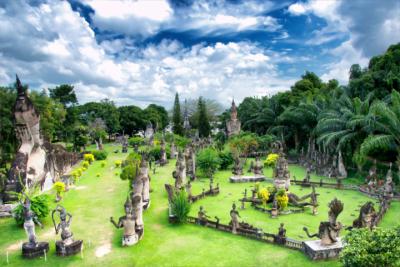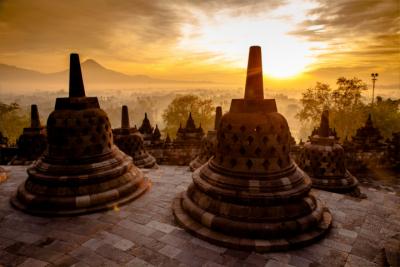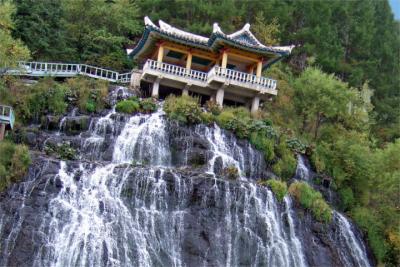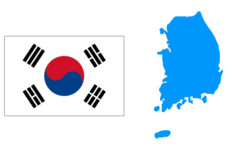Travel Offers
Travelmyne Featureprint
Distance
South Korea - In the Country of Morning Silence
The Korean Peninsula lies between China and Japan. Its southern part is the Republic of Korea, better known as "South Korea". Extraordinary landscapes, Asia's Far Eastern exoticism and the alternation between tradition and modernity make this country a fascinating destination.
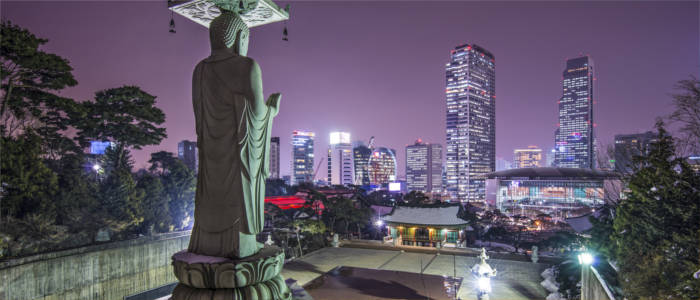
Geography - The south of the Korean Peninsula
The country's name "South Korea" refers to the Republic of Korea. Due to its geographical position, the Asian country is better known under the first name. South Korea lies in the southern part of the Korean Peninsula and borders on North Korea in the north. It is enclosed by the Sea of Japan, the Korea Strait and the Yellow Sea. It is divided into nine provinces and six metropolitan cities in addition to the capital and metropolis of Seoul. Other important cities are Busan, Incheon and Gyeongju. The climate is temperate to cold and there are four seasons. In August, it gets up to 26 °C warm and January is the coldest month with -4 °C. One climatic exception is the distant island of Jeju, which is dominated by subtropical climate.
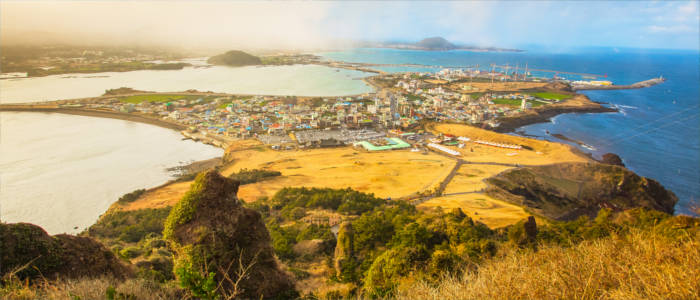
Nature - Mysterious landscapes
South Korea is crossed by no less than five mountain ranges. The greatest one among them are the Taebaek Mountains. The highest point on the mainland is Jirisan with a height of 1,915 metres. The country's highest peak lies on an island and is the remnant of Hallasan volcano (1,950 m). South Korea comprises about 4,400 islands, 500 of which are permanently inhabited. Two thirds of the country are thickly covered in mixed and conifer forests. The fragrant pine forests are particularly noticeable. The mountains are home to lynxes and leopard cats, while the coast is populated by seals. South Korea's shoreline is 2,413 kilometres long. So, it is no wonder that there are countless stunning beach sections. In addition, travellers can explore many hidden bays and peninsulas. The national flower is the hibiscus. It is meant to embody Korea's history and the endurance of the Korean nation. You see it everywhere in the warm season. Other plants which grow in the country are rhododendron, laurel, bamboo and camellias.
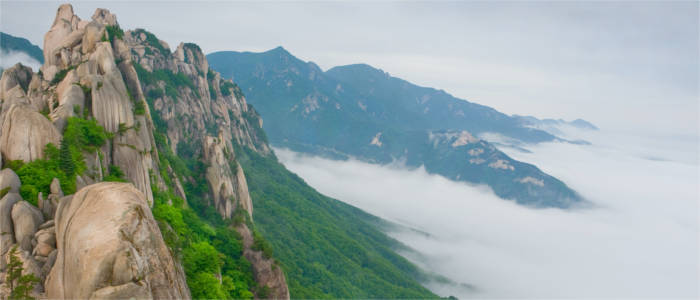
Natural sights - Islands and mountains
Although the mainland has very diverse natural spaces, many visitors are drawn to Jeju island. It is the greatest island in the country and is about 150 kilometres south of the mainland. The lava tunnels of the volcanic island are part of the UNESCO World Natural heritage and made the tropical island famous. It also accommodates Asia's only waterfall which drops directly into the sea - Jejongbang Waterfall. Travellers can also climb the highest peak Hallasan here. According to legend, it is possible to touch the Milky Way from there. South Korea's island world is generally highly recommended. The coral island of Udo is particularly popular with divers and the volcanic islands of Jukdo and Ulleungdo offer incredibly beautiful rock formations and steep cliffs. You see many rare animal and plant species on the natural island of Hongdo. The mainland, on the other hand, accommodates the magical Seoraksan National Park and does not only offer harsh rocks and the Taebaek Mountains but also hidden Buddhist temples and mountain forests full of magnolias.

Culture - The divided country
The first settlements in the present-day territory of South Korea were already built over 700,000 years ago. According to legend, the first Korean kingdom of Gojoseon was founded 2333 BC. From the 10th to the 14th century, the Goryeo dynasty ruled over the territory and declared the Buddhism the official religion. The blackest chapter in Korean history is the time of the Japanese colonial rule from 1910 to 1945. It is a sensitive topic to the present day. The situation did not relax after 1945 because that was the beginning of the Korean War, which lasted until 1953. Since then, the country has been divided into North and South Korea. The tension is unchanged on both sides, although many people strive after conciliation. Despite the turmoil of the last centuries, the South Koreans have maintained their open-mindedness and sociability. They are particularly open towards guests. Most visitors find it easy to get in touch with the locals. The best icebreaker is, of course, a smile and polite behaviour.
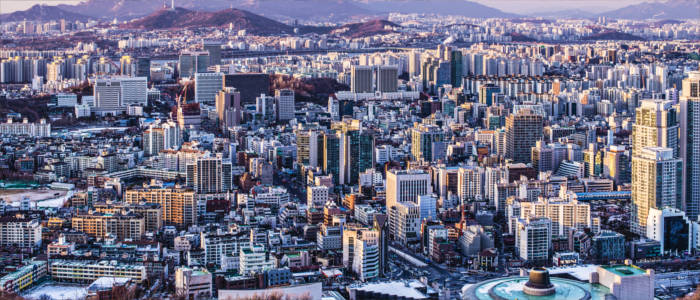
Cultural sights - Megacities and the Gate to the World
Seoul is a megacity and the most densely populated city on earth after Tokyo. Almost every traveller who comes to Korea visits the South Korean capital. Besides giant skyscrapers, it accommodates the impressive Gyeongbokgung Palace, Gwanghwamun gate and numerous cultural monuments. The N Seoul Tower and the fashionable district of Gangnam are very popular too. Besides all modernity, the city fascinates with its many historical spots and building. Seoul's old town seems to hardly have changed in the course of the centuries. The second biggest city of Busan (also "Pusan") at the Sea of Japan is popular as well. It is also called "Korea's Gate to the World" because it is the location of the world's greatest seaport. Other exciting sights are the Hwaseong Fortress in Suwon, die royal tombs and temples in Gyeongju - the capital of the ancient kingdom of Silla - and the historical houses in Jeonju.

Experience - Shopping Town and entertainment district
The Korean cuisine has its very own taste in the same way that the Indian cuisine differs from the Chinese or Japanese one. Chilli, garlic and rice play a major role here. The national dish is called "kimchi" and refers to spicy, marinated vegetables. The dish bulgogi means "fire meat" and consists of pork or beef, which is prepared over a grill on the table. Dried seaweed with rice and vegetables (kimbab) is another typical dish. The country's types of beer are called "Crown" and "OB". In the evening, the inhabitants prefer soju, a liqueur made of potatoes. Many travellers taste the rice wine Cheongju or take a bottle home as a souvenir. In addition, you can buy luxury clothes, Korean lanterns and ancient scrolls as typical souvenirs. The night market of Dongdaemun and Shopping Town in Seoul accommodate over 5,000 shops and are very popular. The nightlife in the capital is equally exciting, bright and lively. In the entertainment district Itaewon, locals and travellers meet in night clubs, casinos, bars, restaurants and pubs. The beer cellars and wine bars are equally popular.
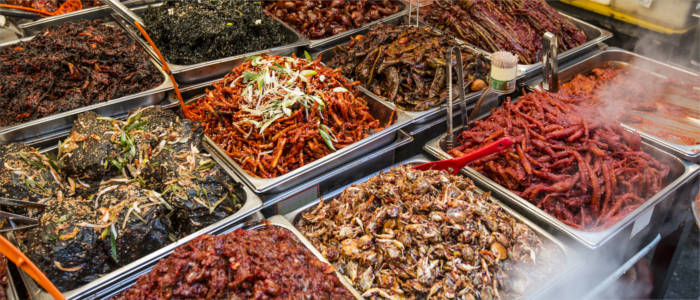
Activities - From spring to winter
Travellers who want to spend their summer holidays in South Korea should visit the country in the warm summer months. At this time, there is a wide range of leisure activities. Water skiing, banana boating, jet-skiing and windsurfing are possible in many places. The beaches in Busan or at the east coast are highly frequented. Holidaymakers can go on hikes and mountain tours both on the mainland and the surrounding islands. The best way of exploring the charming region with all its wonderful natural spaces and magnificent temples is on foot. While the region of Gyeongju is excellently suited for relaxing hikes, Hallasan mountain is a real challenge. In winter, South Korea offers great winter sports opportunities. The season in Gangwon Province lasts from November to March. Most winter sports fans use the well-developed pistes between December and February.
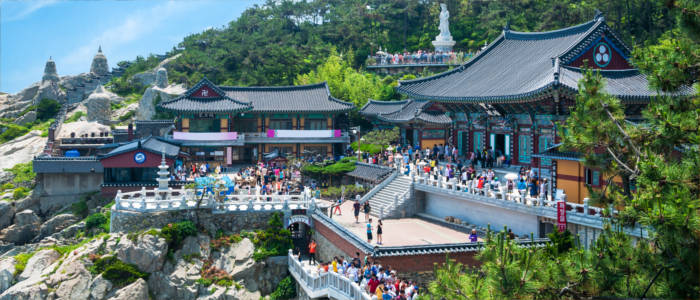
Information
Depending on which leisure activities you prefer, you should travel South Korea from April to June or from September to November. The hot summer months of July and August are often very rainy. Holidaymakers who also want to visit the neighbouring country of North Korea need to inform themselves on the necessary visa and entry requirements.
South Korea is one of the most popular travel destinations in Asia - and rightly so. It is not only the scenic landscape and the variety of cultural assets which make the country so appealing but also its open and cordial inhabitants.

